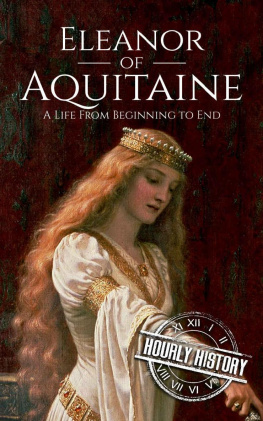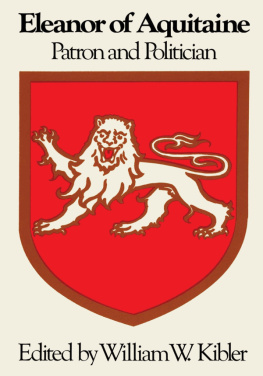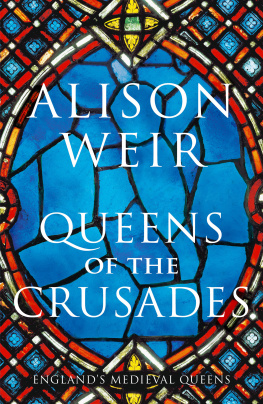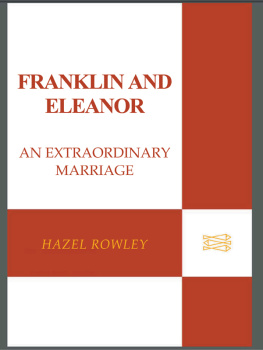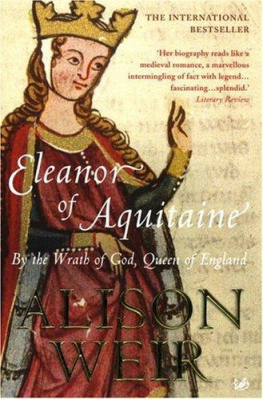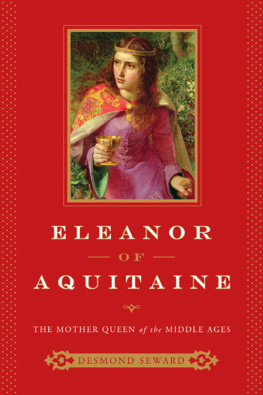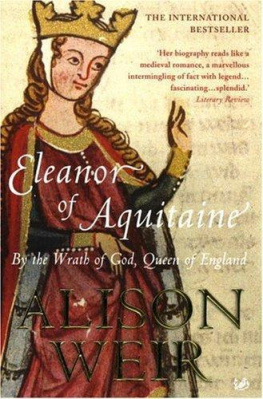Pagebreaks of the print version

THE TWO ELEANORS OF HENRY III
THE LIVES OF ELEANOR OF PROVENCE AND ELEANOR DE MONTFORT
For my wife
THE TWO ELEANORS OF HENRY III
THE LIVES OF ELEANOR OF PROVENCE AND ELEANOR DE MONTFORT
DARREN BAKER
First published in Great Britain in 2019 by
PEN AND SWORD HISTORY
An imprint of
Pen & Sword Books Ltd
Yorkshire Philadelphia
Copyright Darren Baker, 2019
ISBN 978 1 52674 751 8
eISBN 978 1 52674 752 5
Mobi ISBN 978 1 52674 753 2
The right of Darren Baker to be identified as Author of this work has been asserted by him in accordance with the Copyright, Designs and Patents Act 1988.
A CIP catalogue record for this book is available from the British Library.
All rights reserved. No part of this book may be reproduced or transmitted in any form or by any means, electronic or mechanical including photocopying, recording or by any information storage and retrieval system, without permission from the Publisher in writing.
Pen & Sword Books Limited incorporates the imprints of Atlas, Archaeology, Aviation, Discovery, Family History, Fiction, History, Maritime, Military, Military Classics, Politics, Select, Transport, True Crime, Air World, Frontline Publishing, Leo Cooper, Remember When, Seaforth Publishing, The Praetorian Press, Wharncliffe Local History, Wharncliffe Transport, Wharncliffe True Crime and White Owl.
For a complete list of Pen & Sword titles please contact
PEN & SWORD BOOKS LIMITED
47 Church Street, Barnsley, South Yorkshire, S70 2AS, England
E-mail:
Website: www.pen-and-sword.co.uk
Or
PEN AND SWORD BOOKS
1950 Lawrence Rd, Havertown, PA 19083, USA
E-mail:
Website: www.penandswordbooks.com
Preface
There have been three queens of England named Eleanor. The first and most famous of them was Eleanor of Aquitaine. She had two husbands, both of them kings, ten children, and went on crusade. The third was Eleanor of Castile. She had only one husband, but sixteen children and she too went on crusade. After her death, she was immortalised with memorial crosses erected in her memory. In between them was Eleanor of Provence. She had only five children, no crusade to her credit, and her husband could not compare to the husbands of the other two Eleanors. Worse, she was blamed for him being a seemingly weak and incompetent monarch. She trod on his back, said one chronicler.
It was this picture of Eleanor of Provence that informed Agnes Strickland six centuries later when she embarked on the first major attempt to introduce this queen of England to the general public. Popular historians of the twentieth century like Thomas Costain also fell back on these unflattering depictions of Eleanor. But there was no denying her tenacity and strength of purpose, which led one chronicler to sneak in a description of her as virago , a woman in the heroic tradition of great deeds. Indeed, it was Margaret Howell who first picked up on this quality in her biography of Eleanor in 1998. She was a woman of great vitality, who also had an unusually exciting life-story. It is that story we shall consider here, in the foreground of the man whose reign made it possible.
King Henry III also received his share of criticism from his contemporaries. He was the longest-ruling monarch of medieval England and most of those fifty-six years were peaceful and prosperous. But political changes at home brought on by Magna Carta and the rise of Parliament, compounded by events abroad like the twilight of the crusades and war between the papacy and Holy Roman Empire, culminated in reforms and a showdown between Henry and radicals led by Simon de Montfort. Like Eleanor of Provence, Simon came to England from the Continent and owed everything to the king. That included marriage to Henrys sister, the other Eleanor of our story.
As a Plantagenet married to a Marshal and then to a Montfort, this Eleanor would bear the names of three of the most distinguished families in English history. The portrait of her that emerges in Mary Greens Victorian work is, however, much like Stricklands Queen Eleanor. She is a woman found wanting in the grand scheme of things, chided for being assertive and too insistent on her rights. Green did not get her material just from churlish chroniclers, either. One contemporary who knew Eleanor de Montfort and counted her as a friend noted her need not only to stand out, but stand up for herself. As with Howells work on Queen Eleanor, it would take a century and a half before a new biography offered new perspectives on this sister and wife of two historic antagonists. The subtitle attached to that work, by author Louise Wilkinson, says it all about her strengths and weaknesses: A Rebel Countess in Medieval England .
It is impossible to separate these women from the men whose relationships and conflicts with each other helped shaped their lives. Both marriages had their problems like any other, but they were long and enduring, and both men were faithful and adoring husbands. The loyalty each spouse inspired in the other, and later in their children, is one reason why these two families were so evenly matched. In that sense, this work might be thought of as the story of two power couples. Whatever Henry or Simon were planning or doing, we can be sure there had been consultation at some point with their respective Eleanors.
These women had, of course, lives apart from their husbands. The countess was a major lord in her own right when she married Simon and she managed their estates in his long absences. The queen had her own household, circle of advisers, and network of patronage. They also had each other. The scanty records show that both Eleanors were in close contact when Henry and Simons relationship was at one of its lowest ebbs. Although the friendship between these sisters-in-law was unable to overcome the divisions that engulfed them and the realm, there is a certain poignancy in the settlement that followed. With Simon dead and bitterness prevailing on both sides, Eleanor de Montfort needed someone to intercede for her in England. Eleanor of Provence was the natural choice.
The idea for this dual biography came as I was finishing up my biography on Henry, which itself followed one on Simon. One thing that struck me about both men was their relative youth when they entered the world stage. Henry was 9 when he succeeded his father King John, and Simon was born and raised amidst the Albigensian Crusade directed by his namesake father. The same can be said for Eleanor de Montfort, who like Henry was 9 years old when she was married to the much older William Marshal II. Eleanor of Provence was 12 when she left her homeland to marry Henry, never to see it again. All four of them entered adulthood with already enough experience for a lifetime. That gave them a clear understanding of what their world was about.
In coming to our own understanding of their lives, it is important to remember that they lived to be relatively old people. Their marriages and relations to each other spanned decades of the thirteenth century, as thrilling and tremendous an age as any in English history. The people they ultimately became owed to ever-changing circumstances and events. To make that development obvious, this dual biography is strictly chronological. In this way I hope to capture their personalities in the marriages and alliances that played out around them, in their hopes and endeavours for their husbands and children, and inevitably in the political struggle that wrenched their families apart. Much of their story may seem familiar to readers of my earlier biographies, but I like to think of this volume as the concluding part of a trilogy in the lives of these four remarkable people.



